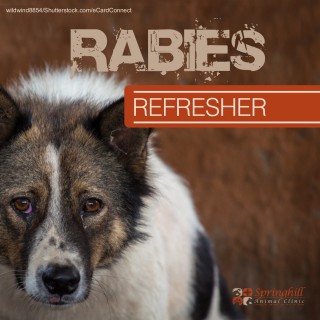We’ve all heard about the risks and effects rabies has for our pets — no known cure, fatal disease — and we all know prevention is the best course. With the summer months in high gear and pets spending more time outdoors, it’s a good time for a quick rabies refresher.
– What is rabies? A deadly disease caused by a virus that attacks the nervous system. It is usually transmitted to people and animals by a bite from an infected animal. Once clinical signs appear, an infected animal usually dies within five days.
– What animals can get rabies? Only mammals can get rabies. In recent years, cats have been the most common domestic animal infected with rabies, due to the fact that many pet owners don’t vaccinate their cats against the disease before they are exposed to rabid wildlife outdoors.
– What are the signs of rabies? Rabies enters the body and travels along the nerves to the brain. Domestic animals may show signs including aggression, excessive drooling, staggering and seizures. Rabid wild animals may only display behavior uncommon to them, for example, an animal usually only seen at night wandering in the daytime.
– How great is the rabies risk to humans? Advances in medicine have greatly reduced the number of rabies cases seen in humans. Most human cases result from exposure to infected bats. Human rabies cases in the United States currently average two per year.
– How can I prevent my pet from getting rabies? The rabies vaccination is the best prevention method, keeping vaccinations up to date is key to prevention. Puppies and kittens should receive their first rabies vaccination at 12 weeks and must be vaccinated again at 1 year. After that time the duration for which the vaccination is recognized as effective is dictated by law. In our area, it is recognized as effective for three years.
– What if my pet has been bitten? Consult with us immediately and contact local animal control authorities.
If you have any questions about the status of your pet’s vaccinations, contact us and we can help.

